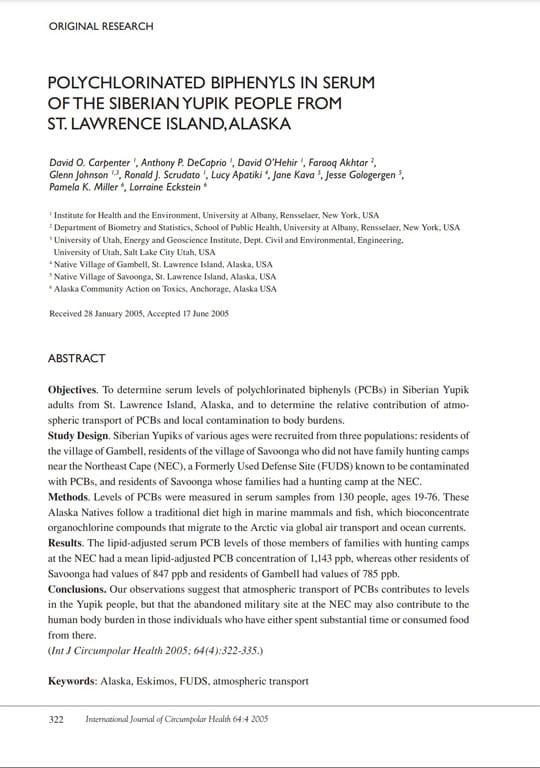Polychlorinated Biphenyls In Serum Of The Siberian Yupik People From St. Lawrence Island, Alaska
About/Abstract
Objectives. To determine serum levels of polychlorinated biphenyls (PCBs) in Siberian Yupik adults from St. Lawrence Island, Alaska, and to determine the relative contribution of atmospheric transport of PCBs and local contamination to body burdens.
Study Design. Siberian Yupiks of various ages were recruited from three populations: residents of the village of Gambell, residents of the village of Savoonga who did not have family hunting camps near the Northeast Cape (NEC), a Formerly Used Defense Site (FUDS) known to be contaminated with PCBs, and residents of Savoonga whose families had a hunting camp at the NEC.
Methods. Levels of PCBs were measured in serum samples from 130 people, ages 19-76. These Alaska Natives follow a traditional diet high in marine mammals and fish, which bioconcentrate organochlorine compounds that migrate to the Arctic via global air transport and ocean currents.
Results. The lipid-adjusted serum PCB levels of those members of families with hunting camps at the NEC had a mean lipid-adjusted PCB concentration of 1,143 ppb, whereas other residents of Savoonga had values of 847 ppb and residents of Gambell had values of 785 ppb.
Conclusions. Our observations suggest that atmospheric transport of PCBs contributes to levels in the Yupik people, but that the abandoned military site at the NEC may also contribute to the human body burden in those individuals who have either spent substantial time or consumed food from there.
Keywords/Info
- Alaska
- Alaska Natives
- FUDS
- atmospheric transport

